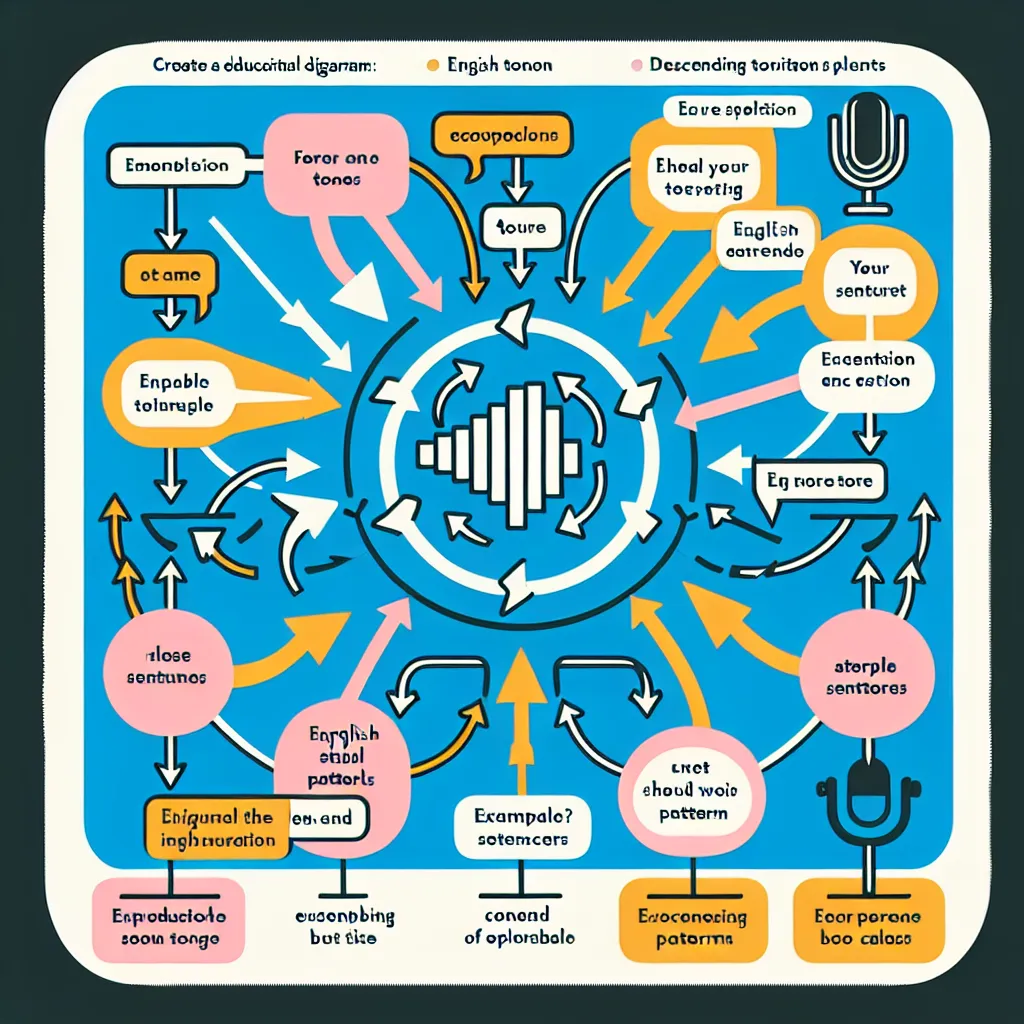Mastering English intonation patterns is a crucial aspect of improving your pronunciation and overall communication skills. Whether you’re a beginner or an advanced learner, understanding and implementing proper intonation can significantly enhance your spoken English. In this comprehensive guide, we’ll explore effective tips and strategies to help you master English intonation patterns.
 English Intonation Patterns
English Intonation Patterns
Understanding English Intonation
What is Intonation?
Intonation refers to the rise and fall of pitch in speech. It’s the melody of language that conveys meaning beyond words. In English, intonation plays a crucial role in expressing emotions, attitudes, and intentions.
Why is Intonation Important?
Proper intonation is essential for several reasons:
- Conveying meaning: It helps differentiate between statements, questions, and commands.
- Expressing emotions: It reflects the speaker’s feelings and attitudes.
- Enhancing comprehension: Correct intonation aids listeners in understanding the message.
- Cultural integration: It helps non-native speakers sound more natural and fluent.
Key Intonation Patterns in English
Rising Intonation
Rising intonation is used in:
- Yes/No questions: “Are you coming?”
- Incomplete statements: “If you’re free tomorrow…”
- Expressing surprise or disbelief: “Really?”
Falling Intonation
Falling intonation is common in:
- Statements: “I’m going to the store.”
- Wh-questions: “What time is it?”
- Commands: “Close the door.”
Fall-Rise Intonation
This pattern is used for:
- Expressing uncertainty: “I might go…”
- Polite disagreement: “That’s not quite right…”
- Implying additional information: “I like it, but…”
Tips for Mastering English Intonation Patterns
1. Listen Actively
One of the most effective ways to improve your intonation is through active listening. Pay close attention to native speakers in various contexts:
- Watch English movies and TV shows
- Listen to English podcasts and radio programs
- Engage in conversations with native speakers
Focus on how they use intonation to convey different meanings and emotions.
2. Practice Shadowing
Shadowing is a technique where you repeat what you hear immediately after the speaker. This method helps you internalize intonation patterns:
- Choose a short audio clip (30 seconds to 1 minute)
- Listen to it several times
- Play the audio and repeat each phrase, mimicking the speaker’s intonation
- Record yourself and compare with the original
3. Mark Intonation Patterns
When reading English texts, mark the intonation patterns:
- Use upward arrows (↗) for rising intonation
- Use downward arrows (↘) for falling intonation
- Practice reading aloud, following these markings
Example: “Are you going to the party↗? I heard it’s going to be great↘.”
4. Use Intonation Apps and Tools
Leverage technology to improve your intonation:
- ELSA Speak: Provides real-time feedback on pronunciation and intonation
- Speechling: Offers personalized feedback from native speakers
- English Accent Coach: Focuses on specific sounds and intonation patterns
These tools can provide immediate feedback and help you track your progress.
5. Practice Question Tags
Question tags are excellent for practicing intonation contrasts:
- Statements with rising intonation: “It’s cold today, isn’t it↗?”
- Statements with falling intonation: “You’re John, aren’t you↘?”
Practice these regularly to improve your intonation flexibility.
6. Exaggerate Intonation
When practicing, exaggerate your intonation:
- Start with overly dramatic rises and falls
- Gradually refine your intonation to sound more natural
This technique helps you become more aware of pitch changes and makes it easier to produce them accurately.
7. Focus on Stress and Rhythm
Intonation is closely linked to stress and rhythm in English:
- Identify stressed words in sentences
- Practice emphasizing these words with slightly higher pitch
- Pay attention to the natural rhythm of English phrases
Example: “I WANT to GO to the PARK today.” (Capitalized words indicate stress)
Common Intonation Mistakes and How to Avoid Them
1. Monotone Speech
Many non-native speakers use a flat intonation, making their speech sound monotonous.
Solution: Practice varying your pitch, especially on key words and at the end of sentences.
2. Rising Intonation on Statements
Some learners use rising intonation for all sentences, which can sound uncertain or childish in English.
Solution: Practice using falling intonation for definitive statements and commands.
3. Inappropriate Intonation for Questions
Using falling intonation for yes/no questions or rising intonation for wh-questions can lead to confusion.
Solution: Remember the general rule – yes/no questions rise, wh-questions fall.
4. Overemphasis on Every Word
Stressing every word equally can make speech sound unnatural and difficult to understand.
Solution: Focus on stressing only the key words that carry the main meaning in a sentence.
5. Ignoring Intonation in Longer Sentences
Learners often struggle with maintaining proper intonation throughout longer sentences.
Solution: Break longer sentences into thought groups and practice intonation for each group separately before combining them.
Phonemic Chart and Commonly Mispronounced Words
Understanding the phonemic chart can greatly aid in mastering intonation patterns. Here are 10 commonly mispronounced words related to intonation, along with their correct pronunciations:
- Intonation: /ˌɪntəˈneɪʃən/
- Pitch: /pɪtʃ/
- Stress: /stres/
- Rhythm: /ˈrɪðəm/
- Emphasis: /ˈemfəsɪs/
- Cadence: /ˈkeɪdəns/
- Inflection: /ɪnˈflekʃən/
- Modulation: /ˌmɒdjʊˈleɪʃən/
- Prosody: /ˈprɒsədi/
- Articulation: /ɑːˌtɪkjʊˈleɪʃən/
Practice these words regularly, paying close attention to their stress patterns and intonation.
 English Phonemic Chart
English Phonemic Chart
Conclusion
Mastering English intonation patterns is a journey that requires patience, practice, and persistence. By incorporating these tips into your daily language learning routine, you can significantly improve your intonation and overall spoken English skills. Remember, the key is consistent practice and active listening. Start small, focus on one pattern at a time, and gradually build your confidence and proficiency.
For more insights on improving your English pronunciation, check out our articles on how to master English pronunciation in public speaking and pronunciation tips for better English communication. Keep practicing, and you’ll soon notice a significant improvement in your intonation and overall spoken English!




